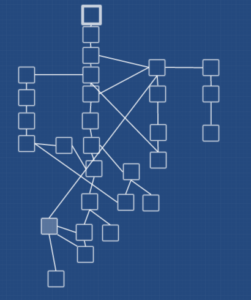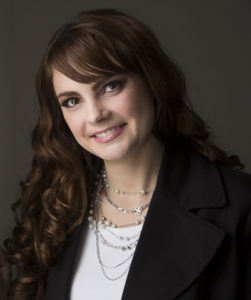Writing Interactive Fiction on Twine

As part of my PhD, I’m taking a computing science master’s course on contextual media that involves game design, narrative, and critical studies. One of the assignments was to write an interactive fiction story and being a writer, I couldn’t help but reflect on this experience.
I have to admit that my first thought was one of dread when I learned we would need to write an interactive fiction narrative on the open-source platform called Twine. I’ve only written one piece of fiction in my adult life, which was a novel, and I chronicled the experience when I participated in the online ROW80 community. I remembered how long it took me to create the characters, plan the plot, and write it.
When someone engages with Twine interactive fiction, the word “play” is often used rather than “read”. This differentiated the writing in one way, but I realized that there were so many differences between writing a linear narrative and an interactive narrative, which involves giving the “player” choices.
Plot planning
First I needed a concept. Thinking about the choices I needed to give the player essentially gave me writer’s block. What makes interactive fiction interactive is giving the player choices and those choices lead to different story paths.

I chatted with a few friends and thought about how I could incorporate different choices. I came up with a story idea that I felt was big enough and flexible enough to branch off into different routes. In Dublin there is a tradition called 12 Pubs of Christmas, where groups of colleagues and/or friends go to 12 pubs in one day and have a drink at each pub. It is a difficult challenge and it leads to many, many stories. The several possibilities of where the story could go made it easier for me to write a non-linear story with different choices. The essence of ‘play’ is two-fold for my Twine story. The interactive fiction itself, published on Twine, is meant to be entertaining, but the player could also create their own real-life pub crawl based on the game rules stated at the beginning of the story. The pubs that the characters visit as real pubs in Dublin and players could visit these pubs if they can figure out which pub it is based on the photo of the interior and/or exterior. As not all pubs in Dublin are supportive of the 12 Pubs adventure people undertake, the pubs were not all listed by name in the story.
Once I had the general story idea, I started to think about what types of choices I could give the player. I then created a list of different possible endings. From there I started to map out the story structure based on story structures we were shown in class. I spent a long time story mapping in the Twine platform.
The problem was that my story’s structure didn’t look like any of the sample categorical story structures. It took me about two days to determine my own story structure, which is a “quest”, but that it would look different than the quest story structure provided. Writing a Twine, or non-linear, story isn’t a paint-by-numbers or fill in the boxes type of process. It is organic and changes as the story develops.
Seat of the pants or free writing
When it came to writing the content, I didn’t want to over think it. The Twine medium is different. There isn’t much room for full character development, long setting descriptions, and other useful background information normally found in novels. Because of this, the story had to move faster. One way to avoid too much narration was to have the majority of the story told in dialogue. It was difficult to write in only dialogue for several characters who weren’t as fully developed as I wanted them to be.
When I thought about the scenario that that characters were in and where they could end up, I let the dialogue flow naturally. The dialogue ended up flowing quite quickly in each “node” or section of the Twine story. It was when the player needed to make a key choice and how the player would get from A to B was when I would need to stop and edit and re-write several times so that the jump in time and space made sense.
Design/development
Twine offers three different base platforms to choose from: Harlowe, Snowman, and Sugarcube, each providing the writer/creator with editing flexibilities. I used Harlowe as the base platform as it is my first Twine story. I only made small design changes to the background colour, font, and I added photos. There is a lot more design work that can be done with Twine to create unique game-like effects and to increase narrative impact.
While I found the experience enjoyable and challenging, I don’t think I will write another Twine story. It did however, allow to me better understand what goes into the creation of non-linear fiction narratives, which will inform my PhD research on non-fiction digital narratives.
So if you’re interested to read what I wrote, you can check it out on the site called Philome.la. I would note that although interactive fiction doesn’t really have ratings I would give a warning that this game would likely be rated Mature. (Mature rating – content is generally suitable for ages 17 and up. May contain intense violence, blood, gore, sexual content and/or strong language.)
If you’d like to read or ‘play’ my Twine story, you can check out the “12 Pubs of Christmas.”

